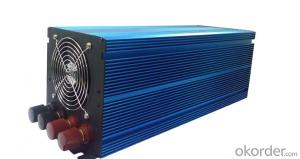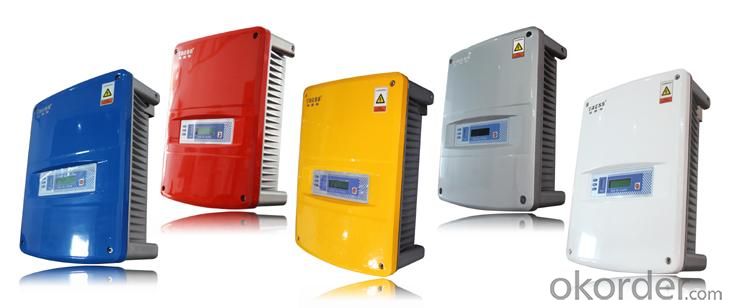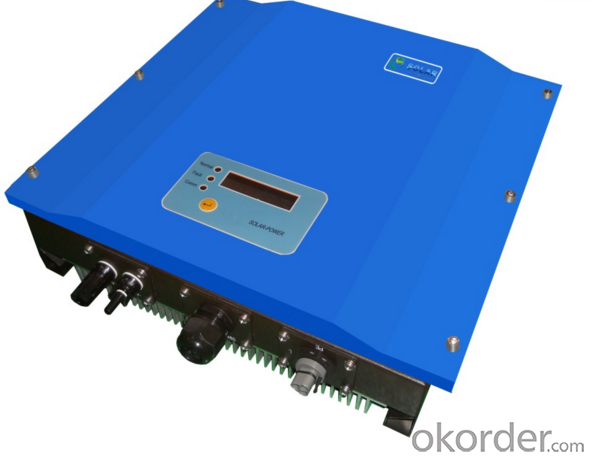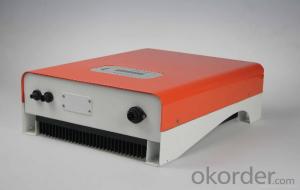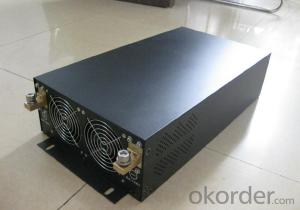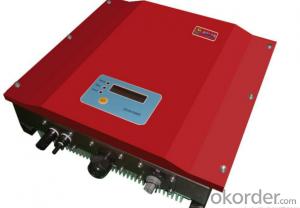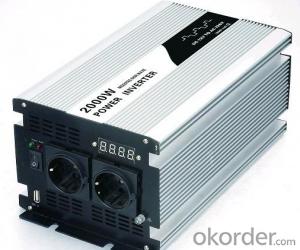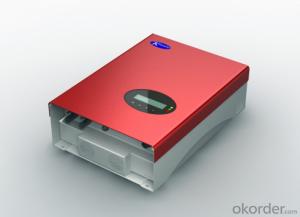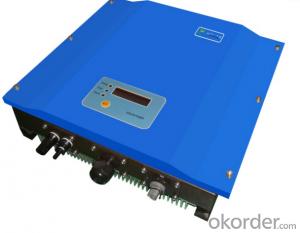Microtek Solar Inverter - Three Phase 6k Solar Inverter Made in China
- Loading Port:
- Shanghai
- Payment Terms:
- TT OR LC
- Min Order Qty:
- 0 watt
- Supply Capability:
- 10000 watt/month
OKorder Service Pledge
OKorder Financial Service
You Might Also Like
Description of Three Phase 6k Solar Inverter
Solar ac power system consists of solar panels, charge controllers, inverter and battery; Solar energy does not include inverter dc power system. Inverter is a kind of power conversion device, inverter by incentives can be divided into self-excited oscillation inverter and separately excited oscillation inverter.
Features of Three Phase 6k Solar Inverter
Standard 10 years warranty, 5-15 years optional
Built-in Gprs as option
Built-in Wifi as option
External Inductor
Smaller and lighter, only 22kg
High performance DSP for algorithm control
VDE-AR-N 4105 certification
New topology design
Dual MPPT design
IP65 waterproof and dustproof level
Multi-button touch interface
LCD screen visible at night
Have anti-shading function
Advantages of Three Phase 6k Solar Inverter
Longer life cycle
Plug and play
Free monitoring through our webportal
Very lower internal temperature
Easy transportation and installation
Faster CPU speed
Adjustable active and reactive power
Maximum conversion effciency up to 97.6%,Euro up to 96.8%
More flexible system design
Maximized system profit
User friendly operation
24 hour operation data readable on screen
Suitable to complex installation environment
Technical Data of Three Phase 6k Solar Inverter
| Type | Omniksol-6k-TL2 |
| Input(DC) | |
| Max.PV Power | 6150W |
| Max,DC Voltage | 1000V |
| Nominal DC Voltage | 640V |
| Operating MPPT Voltage Range | 150-800V |
| MPPT Voltage Range at Nominal Power | 280-800V |
| Start up DC Voltage | 250V |
| Turn off DC Voltage | 150V |
| Max, DC Current(A/B) | 11A/11A |
| Max, Short Cicuit Current for each MPPT | 16A/16A |
| Number of MPP trackers | 2 |
| Max, Input Power for each MPPT* | 4000W |
| Number of DC Connection | A:2/B:2 |
| DC Connection Type | MC4 connector |
| Output(AC) | |
| Max,AC Apparent Power | 6000VA |
| Nominal AC Power (cos phi = 1) | 6000W |
| Nominal AC Current | 8.7A |
| Nominal AC Voltage | 3/N/PE;220/380V |
| 3/N/PE;230/400V | |
| 3/N/PE;240/415V | |
| Nominal Grid Frequency | 50Hz/60Hz |
| Max, AC Current | 10.7A |
| Grid Voltage Range** | 185-276V |
| Grid Frequency Range** | 45-55Hz/55-65Hz |
| Power Factor | 0.9 capacitive... 0.9 inductive |
| Total Harmonic Distortion(THD) | <2% |
| Feed in Starting Power | 30W |
| Night time Power Consumption | <1W |
| Standby Consumption | <10W |
| AC Connection Type | Plug-in connertor |
| Efficiency | |
| Max,Efficiency | 97.6% |
| Euro Efficiency | 96.8% |
| MPPT Efficiency | 99.9% |
| Safety and Protection | |
| DC Insulation Monitoring | Yes |
| DC Switch | Optional |
| Residual Current Monitoring Unit (RCMU) | Integrated |
| Grid Monitoring with Anti-islanding | Yes |
| Electricity Fuse Protection | Yes |
| Protection Class | Ⅰ(According to IEC 62103) |
| Overvoltage Category | Ⅲ(According to IEC 62109-1) |
| Reference Standard | |
| Safety Standard | EN 62109, AS/NZS 3100 |
| EMC Standard | EN 6100-6-1, EN 6100-6-2, EN 6100-6-3 EN 6100-6-4, EN 6100-3-2, EN 6100-3-3 |
| Grid Standard | VDE-AR-N4105. VDE-0126-1-1,G83/1,EN 50438,RD1699,CEI 0-21, AS4777,C10/C11 |
| Physical Structure | |
| Dimensions | 352x421x172.5mm |
| Weight | 22kg |
| Environmental Protection Rating | IP 65 (According to IEC 60529) |
| Cooling Concept | Natural convection |
| Mounting Information | Wall bracket |
| General Data | |
| Operating Temperature Range | -25℃ to +60℃(derating above 45℃) |
| Relative Humidity | 0% to 98%, no condensation |
| Max. Altitude (above sea level) | 2000m |
| Noise Type | <40dB |
| Isolation Type | Transformerless |
| Display | 20 x 4 LCD (800x480 TFT Graphic Display optional) |
| Data Communication | RS485(WiFi, GRPS optional) |
| Computer Communication | USB |
| Standard Warranty | 10 Years (5-15 years optional) |
IMages of Three Phase 6k Solar Inverter
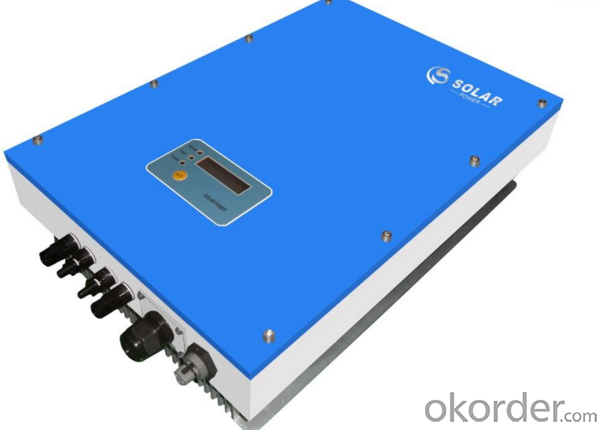
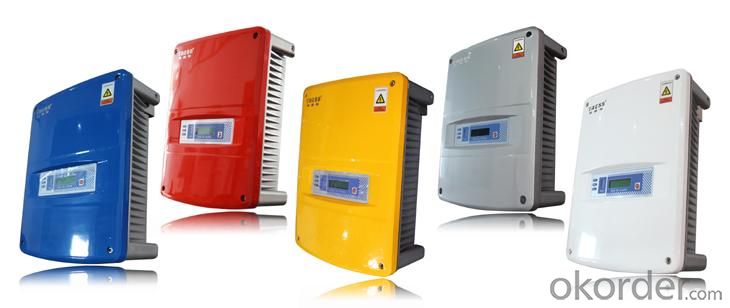
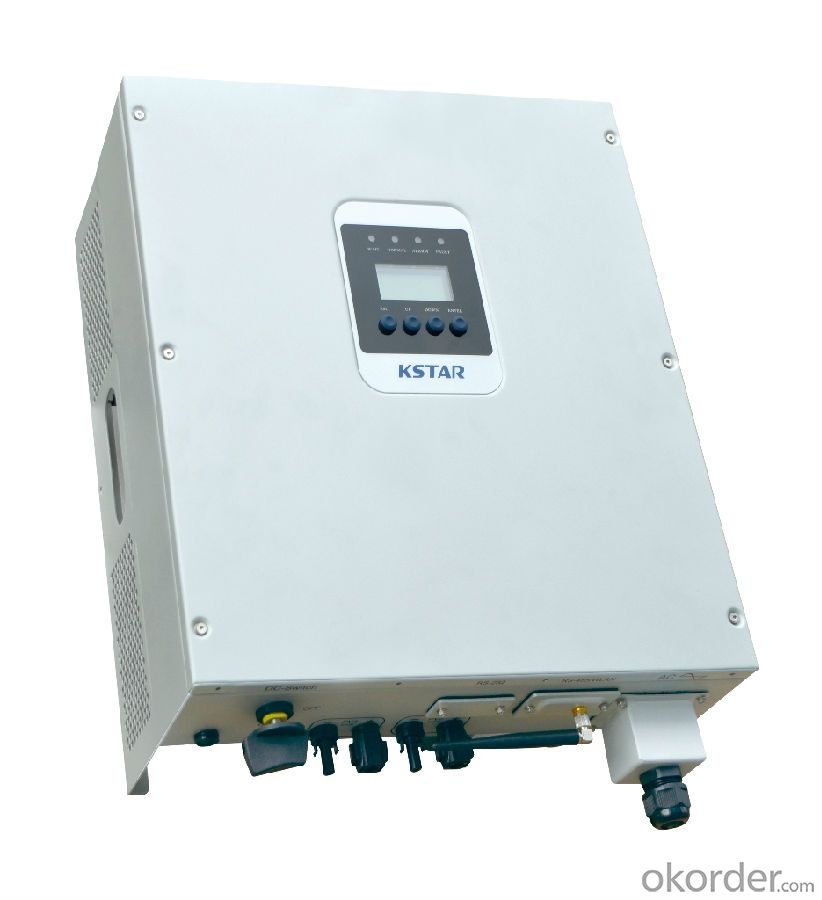
FAQ
Q: Do you have the CE, TUV, UL Certification?
A: We’ve already passed all the tests, and any certificate is available.
Q: Have you ever sold your products to companies in my country?
A: Of course, we have customers in all general PV markets, but I think we should expand our market share along with the market growth.
Q: When did your company set up? You are a new company, how can I believe your quality?
A: We entered into Solar PV industry in 2005, now we have several plants in manufacturing of a-Si and c-Si panels, and our capacity is 220MW per year. Till now we have already passed all the tests by authorized laboratories, e.g. TUV, CE, UL.
Q: Can you help us install the module if we cooperate with you?
A: We haven’t entered into installation sector, but we have the plan in near future.
Q: How do you pack your products?
A: We have rich experience on how to pack the panels to make sure the safety on shipment when it arrives at the destination.
Q: Can you do OEM for us?
A: Yes, we can.
Q: Can we visit your factory?
A: Surely, I will arrange the trip basing on your business schedule.
- Q: Are there any government regulations or certifications for solar inverters?
- Yes, there are government regulations and certifications for solar inverters. In many countries, solar inverters need to comply with specific standards and regulations to ensure their safety, performance, and grid compatibility. Additionally, there are various certifications, such as UL, CE, and IEC, that solar inverters can obtain to demonstrate their compliance with the required standards. These regulations and certifications aim to promote the widespread adoption of reliable and efficient solar inverters in the renewable energy industry.
- Q: How does a solar inverter handle voltage sags or swells in the grid?
- A solar inverter handles voltage sags or swells in the grid by continuously monitoring the voltage levels. When it detects a sag or swell, it adjusts its internal circuitry to regulate the output voltage accordingly. This ensures that the connected solar panels continue to operate within their optimal voltage range, minimizing any negative impact on the overall power generation system.
- Q: What are the common troubleshooting steps for a malfunctioning solar inverter?
- The common troubleshooting steps for a malfunctioning solar inverter may include checking the power supply, inspecting the wiring connections, resetting the inverter, performing a firmware update, checking for error codes or error messages, and consulting the manufacturer's manual or contacting technical support for further assistance.
- Q: How does a solar inverter handle variations in grid voltage?
- A solar inverter handles variations in grid voltage by continuously monitoring the grid voltage and adjusting its own output voltage accordingly. It uses advanced control algorithms to maintain a stable and consistent output voltage despite fluctuations in the grid voltage. This ensures that the solar power generated is synchronized with the grid and can be seamlessly fed into the electrical system.
- Q: What are the safety certifications for a solar inverter?
- Some common safety certifications for a solar inverter include UL (Underwriters Laboratories) certification, IEC (International Electrotechnical Commission) certification, and CE (Conformité Européene) marking. These certifications ensure that the solar inverter meets specific safety standards and regulations to protect users from potential hazards.
- Q: What is the role of voltage support in a solar inverter?
- The role of voltage support in a solar inverter is to ensure that the output voltage from the inverter remains stable and within acceptable limits. It helps regulate the voltage to match the requirements of the connected load, preventing any voltage fluctuations or overvoltage conditions that could potentially damage the equipment or disrupt the operation of the solar power system.
- Q: Can a solar inverter be used with a solar-powered water purification system?
- Yes, a solar inverter can be used with a solar-powered water purification system. A solar inverter is responsible for converting the direct current (DC) electricity produced by solar panels into alternating current (AC) electricity that can be used to power various appliances and systems. In the case of a solar-powered water purification system, the solar inverter would be essential in converting the DC electricity generated by the solar panels into the appropriate AC power required to operate the system's pumps, filters, and other components.
- Q: Can a solar inverter be used with different types of energy storage systems?
- Yes, a solar inverter can be used with different types of energy storage systems. Solar inverters are typically designed to convert the direct current (DC) generated by solar panels into alternating current (AC) that can be used to power household appliances and other electrical devices. They can be integrated with various energy storage technologies such as batteries, supercapacitors, and flywheels to store excess energy generated by the solar panels for later use. The compatibility between the solar inverter and the energy storage system may depend on factors such as voltage requirements, capacity, and communication protocols.
- Q: What is the role of a power control unit in a solar inverter?
- The role of a power control unit in a solar inverter is to regulate and control the flow of electricity from the solar panels to the electrical grid or to power various appliances. It ensures that the generated solar energy is converted efficiently and safely, and provides protection against overvoltage, overcurrent, and other electrical issues. Additionally, the power control unit may also include features like maximum power point tracking (MPPT) to optimize the system's energy output.
- Q: Can a solar inverter be remotely monitored and controlled?
- Yes, a solar inverter can be remotely monitored and controlled. Many modern solar inverters are equipped with advanced monitoring and communication capabilities, allowing them to be connected to a network and accessed remotely. This enables users to monitor the performance of their solar system, track energy production, and make adjustments or troubleshoot issues from a remote location using a computer, smartphone, or other devices.
Send your message to us
Microtek Solar Inverter - Three Phase 6k Solar Inverter Made in China
- Loading Port:
- Shanghai
- Payment Terms:
- TT OR LC
- Min Order Qty:
- 0 watt
- Supply Capability:
- 10000 watt/month
OKorder Service Pledge
OKorder Financial Service
Similar products
Hot products
Hot Searches
Related keywords
